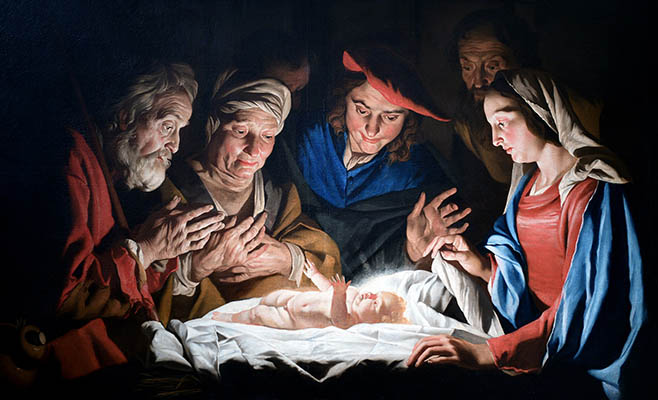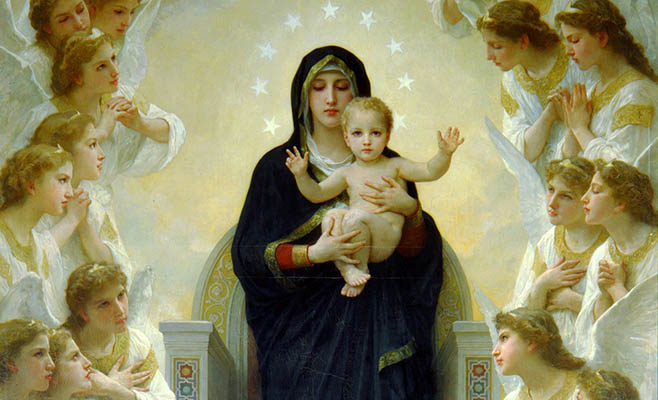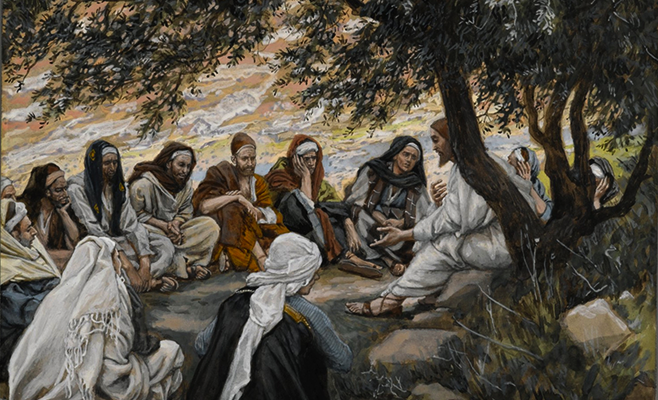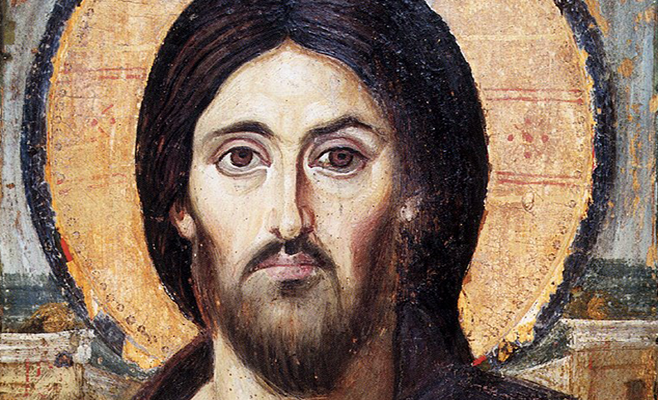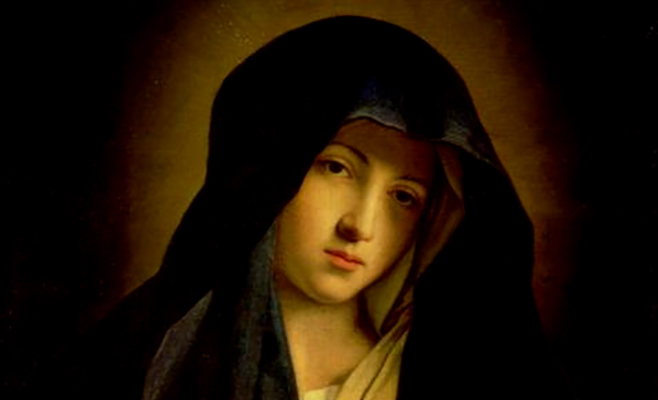The Narrow Gate
Homily 21st. Sunday Yr C: The Narrow Way/Growth in the Spiritual Life
Fr. Dwight P. Campbell, S.T.D.
In our first readingGod speaks through the Prophet Isaiah and tells people of Israel that salvation is not just for the Jews; the Lord will gather people from every nation and language to His holy city Jerusalem – an image of the Church.
Psalm 117: “Praise the Lord ALL you nations; glorify Him ALL you peoples”
Jesus affirms this: At His Ascension He gives His Apostles the Great Commission: “Go and make disciples of ALL nations, baptizing them and teaching them all that I have taught you.”
Today’s Gospel, Jesus clarifies things. Someone asks Him: “Lord, will only a few be saved?” Jesus says, “Strive to enter through the narrow gate, for many, I tell you, will attempt to enter but will not be strong enough.”
Jesus goes on to say that many will say to Him, “Lord, we ate and drank with you, and you taught in our streets.” But He will say, “I do not know where you are from. Depart from me, all you evildoers.”
So, while all peoples of every nation are called to be saved, and God wills that all men be saved – Jesus’ death redeemed everyone – not everyone will be saved.
Why not? Jesus says that the gate into Heaven is narrow, and that many will not be strong enough to enter.
We must understand that Jesus Himself is the gate. “No one comes to the Father except through me.”
Why does Jesus say we need “strength” to follow Him, and thereby enter the Kingdom of Heaven?
Because choosing to live according to the teachings of Jesus is not easy. It takes total commitment, constant effort to follow the Commandments and the teachings of Christ and His Church.
We can’t think that we can enter Heaven if we live lives selfishly centered upon ourselves, pursuing sinful pleasures, and a life of ease and comfort.
We can’t just give lip service to Jesus. “Hey, Lord, we’re buddies. I believe in you, so I’ll be saved, right?” Wrong! In his epistle in the New T., St. James says, “Even the devils in Hell believe!”
No, salvation requires that we live fully the way of life Jesus gives us, following His example. It requires above all a life of prayer and sacrifice; of love of God with our whole mind, heart and strength, and active love of neighbor.
The Saints are our models here – that’s why the Church has canonized them, and proclaimed them saints – they lived lives of heroic virtue and are our models for following Jesus.
One saint I’ll focus on today is from our Carmelite gallery of saints in the sanctuary that I have not preached on: St. John of the Cross.
Born in 1542 in Spain into a poor family
Age 21 became a Carmelite friar
1567 ordained a priest
Other Carmelites recognized his brilliant intellect.
He fervently desired to grow in sanctity, and was somewhat dissatisfied with the Carmelites, so he was going to leave Carmelite order and join the most strict religious order in the Church – Carthusians. (A great documentary you can watch on You Tube – Into the Great Silence, portrays the Carthusian way of life, of prayer and work in silence.)
Another Carmelite, St. Teresa of Avila, persuaded him to help her reform the Carmelite order – “discalced” (barefoot – or today, sandals).
John did help her. But this angered the older Carmelite friars (few people willingly accept reform), so they threw join into a prison, where he suffered for nine months before miraculously escaping with the help of Our Lady.
St. John of the Cross was not only canonized a saint; he was proclaimed a Doctor of the Church – which means his writings are a sure guide to growth in the spiritual life: the life of prayer and penance.
St. John tells us (as do other great spiritual writers) there are 3 basic stages or ways to the spiritual life: Purgative, Illuminative, and the Unitive.
Purgative Way: these are beginners on the path to holiness. They try to purge themselves of sins, especially mortal sins: They goes to Mass every Sunday, avoids bad friends/relationships; and they begin a life of prayer.
Illuminative Way: as people grow in the spiritual life, theyeasily keepsthemselves from mortal sins, but do not so easily avoid venial sins, because they still take pleasure in earthly things and still give in to their disordered desires and passions.
However, they are make progress in prayer, especially in meditation. (The Rosary is an excellent means here, because we meditate on the mysteries of Christ’s life, death and resurrection, and the life of Mary.)
With progress in prayer, they see the changes in their lives: They avoid sinful habits, grow in the practice of virtues (theological: Faith, Hope, Charity; and moral: prudence, justice, fortitude and temperance), they receive the sacraments more frequently and fervently, especially Penance (as a means to avoid sin) and the Holy Eucharist – daily Mass, Eucharistic adoration.
Along with prayer life deepening, they take on a life of self-denial and sacrifice. And the Holy Spirit works more and more in their soul. In prayer they begin to experience what is called infused contemplation: God grants them insights into divine mysteries.
Unitive Way: This is the state perfection. These have their minds and hearts detached from all earthly things; and in doing so they enjoy great peace;they are not agitated by worldly desires or problems, and they learn to control their passions and emotions.
These have their minds chiefly fixed on God and their attention turned, either always or very frequently, to Him. The person now lives in a recollected state, and enjoys a beautiful union with God through love; they actually experience this love, and are able to love in return.
St. John of the Cross’ works are a wonderful guide in the spiritual life: Ascent of Mount Carmel, Dark Night of the Soul, Living Flame of Love, Spiritual Canticle – some of these works are in our parish library.
St. John of the Cross, as well as many other experts in the spiritual life (like St. Teresa of Avila) tell us that everyone is called to the unitive state, the state of perfection. After all, Jesus says: “Be perfect, as your heavenly Father is perfect.”
Why do so few people attain this perfection? Well, the main obstacle to growing in and attaining perfection is our disordered attachment to earthly things, our love for creatures and the things of this world rather than love of God.
St. John of the Cross uses a good analogy: A little bird is unable to fly even though just a thin piece of thread is tied to its leg. Likewise, the soul cannot soar to spiritual heights if our hearts, minds and wills are attached to love of self and earthly things.
Let us pray to St. John of the Cross, St. Teresa of Avila, and Our Lady of Mt. Carmel, that they may help us to grow in the spiritual life and to attain that state of perfection, so that we may enjoy the rewards that await us in Heaven.

